Learn how to make a nourishing 3-ingredient tallow balm recipe at home. It’s super easy to DIY, which saves you a lot of $$ and ensures that you’re left with a high-quality, chemical-free balm that you can apply just about anywhere. Plus we’ll show you some tricks for working with tallow.
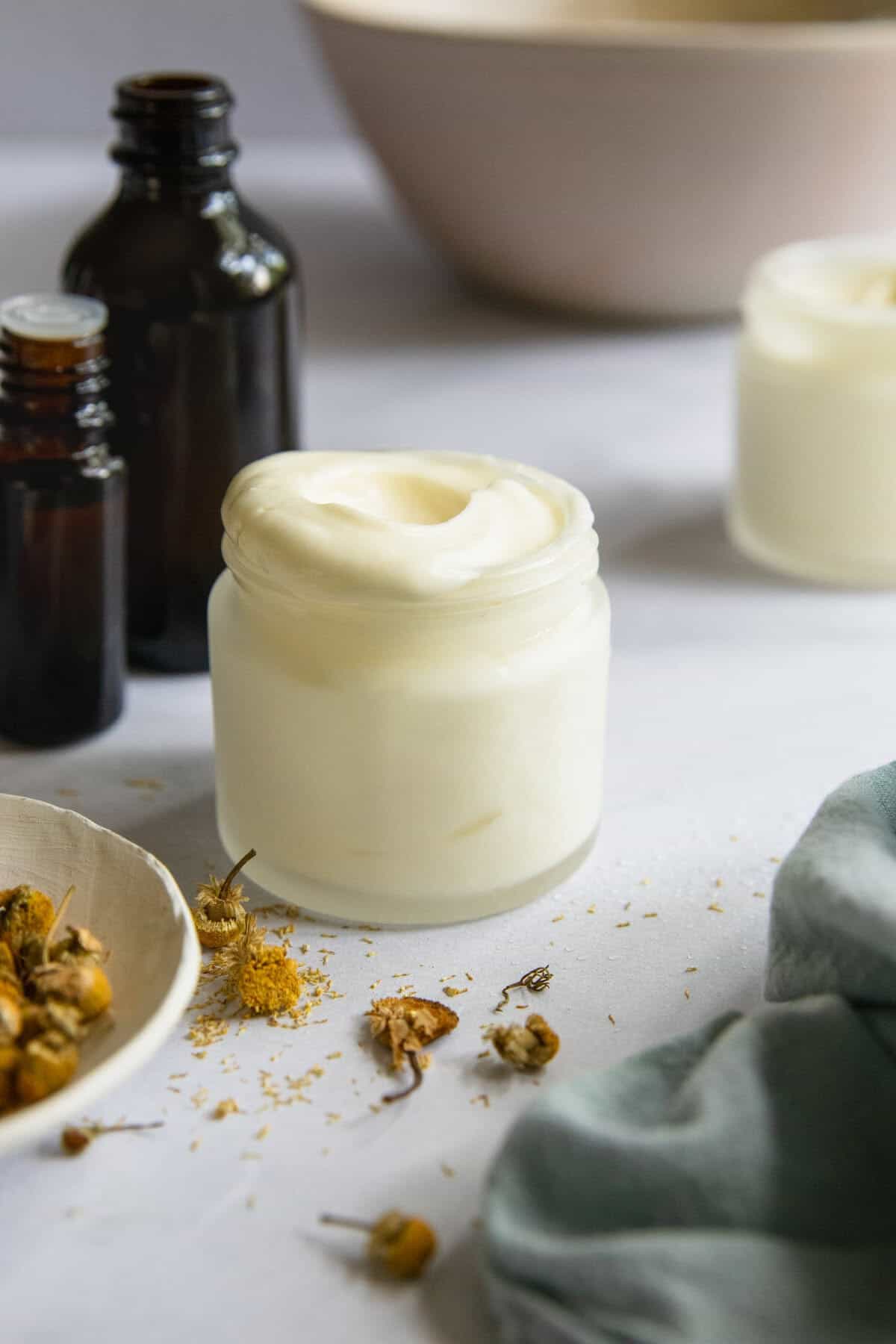
I never thought you’d find me smearing cow fat on my body, but all I can really say is the ladies of Tiktok know what they’re talking about. Because I was blessed with perpetually dry hands, I recently gave tallow balm a try thanks to promises of fewer pimples, less wrinkles, and most importantly, super soft skin.
The downside of handmade balms is that buying them can get pricey fast, so follow our easy recipe to make your own whipped balm with olive oil at home.
Jump to:
Tallow Balm Benefits
If you’re not familiar with tallow balm,it’s a nutrient-rich moisturizer made from rendered cow fat (called ‘tallow’). Making your own homemade balm with tallow provides many skin-loving benefits,including:
- Tallow closely resembles our own skin’s natural sebum,so it provides deep,long-lasting hydrationthat other oils may not.
- Tallow is rich in fatty acidslike stearic acid,oleic acid,and palmitic acid,which help to nourish and protect the skin.
- It contains vitamins A,D,E,and K,which are vital for skin health and regeneration.
- The natural antimicrobial propertiesof tallow also help to protect the skin from infections and inflammation.
Tallow Balm Ingredients
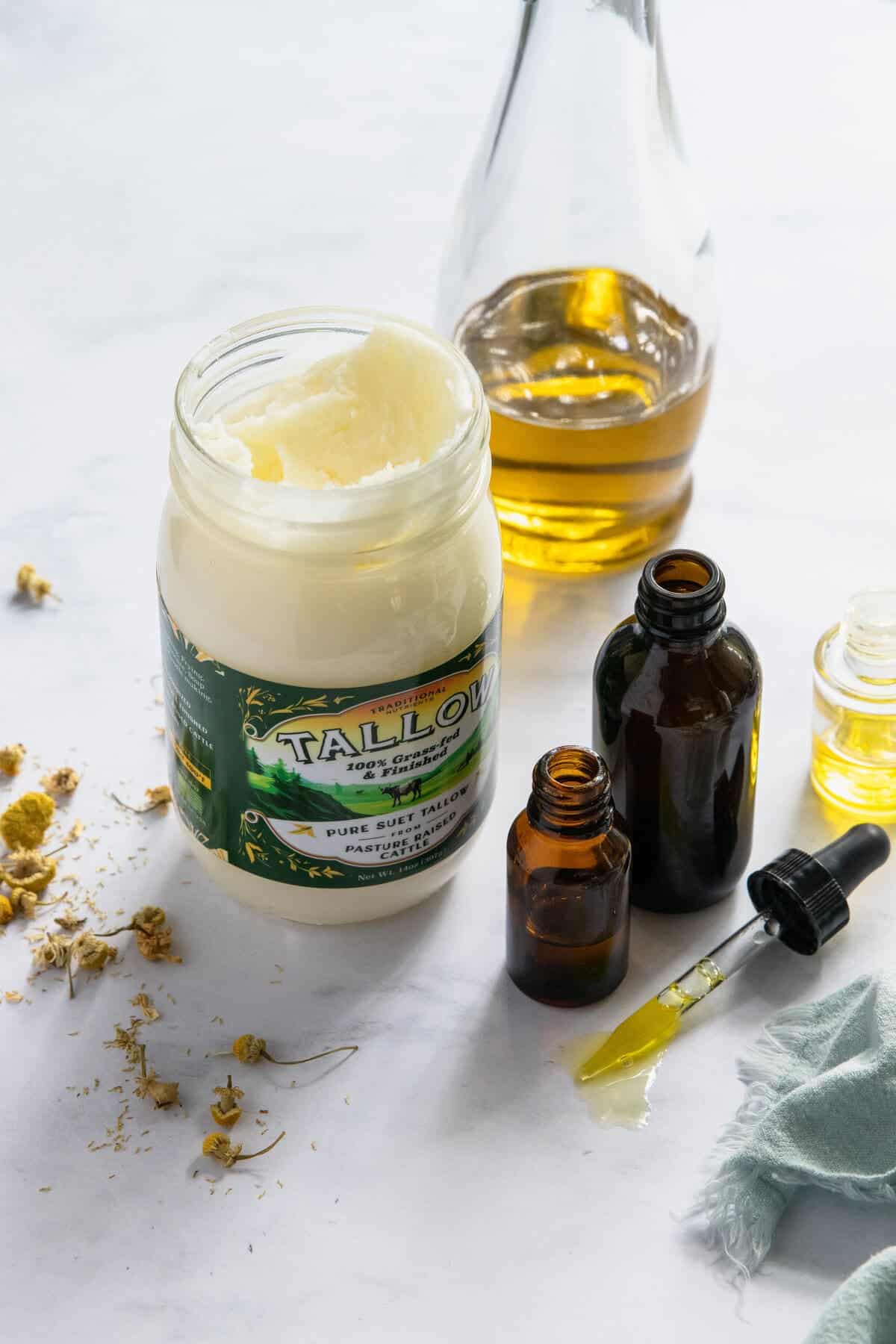

This balm contains just three ingredients:tallow,olive oil,and essential oil.
Beef tallow:If you have the option,use suet(the fat around the kidneys) for the highest quality tallow. It’s cleaner and has a milder smell compared to other beef fat. I found tallow at my local health foods store,but you can also find it online and at most farmer’s markets.
Olive oil:Olive oil is a great addition to tallow balm thanks to its moisturizing and antioxidant properties. It helps to keep the skin soft and supple by providing deep hydration. It also makes the tallow smooth and creamy instead of dry and fluffy.
Essential oils:Tallow can have a distinctive odor that some don’t like. Purifying your tallow helps cut down on it,and you can also use essential oils. Some options:
- Sweet marjoramis known for its calming and soothing properties.
- Chamomilesoothes irritated skin and reduce redness,making it ideal for sensitive or inflamed skin conditions.
- Ylang ylanghelps to regulate oil production,making it suitable for both dry and oily skin types.


How To Purify Tallow
Whenever you use tallow for skincare and soap recipes (like goat milk soap),you’ll want to purify it first.
The initial rendering process separates the fat from the meat and connective tissue,but it can leave behind impurities that you don’t want in your skincare products. Even if you use store-bought tallow,like I did,purifying it removes any lingering impurities and gets rid of the sometimes strong,meat-like odor that’s often associated with tallow.
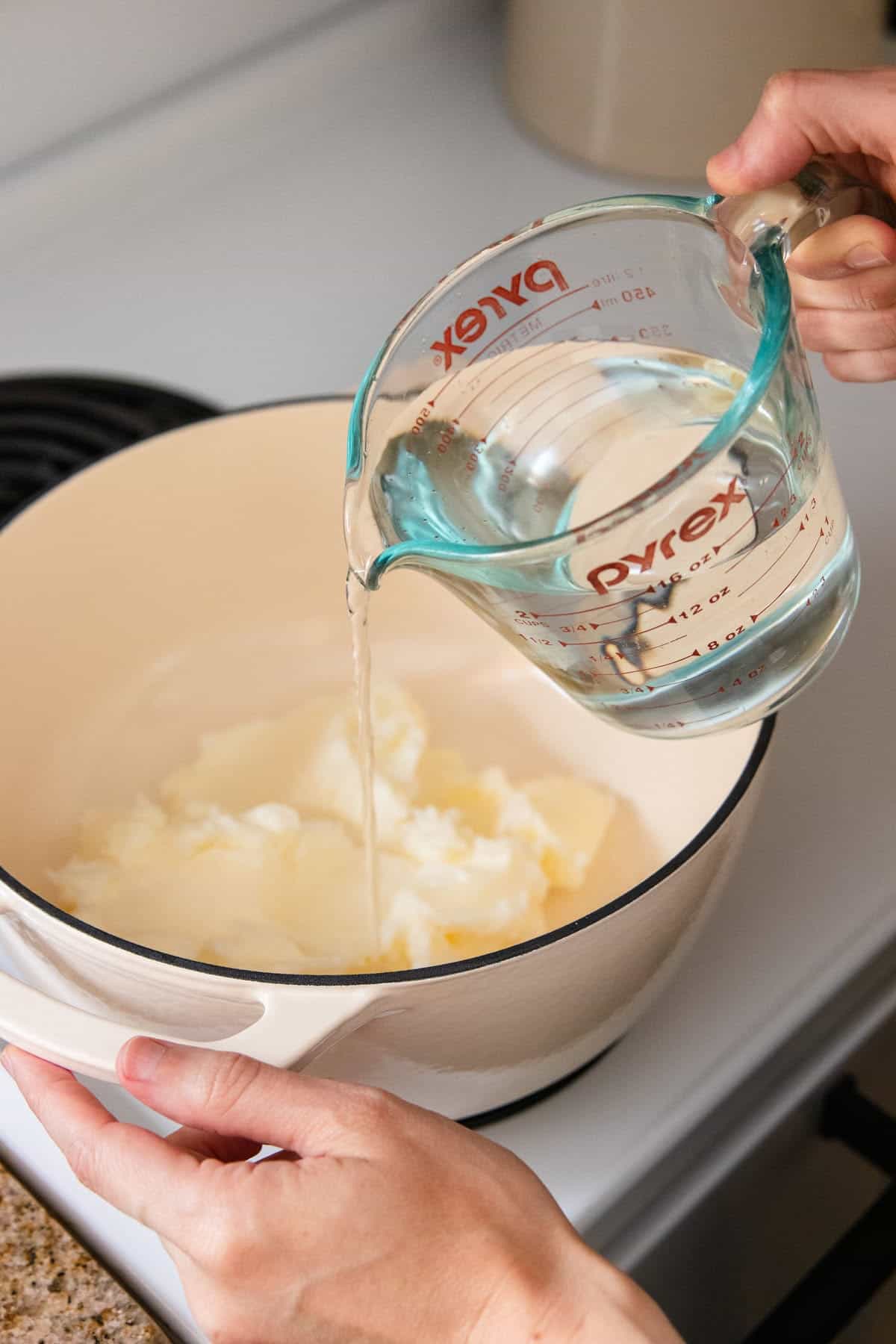

Step 1:Combine tallow and water
Add 16 ounces of rendered tallow and 6 cups of water to a large pot.
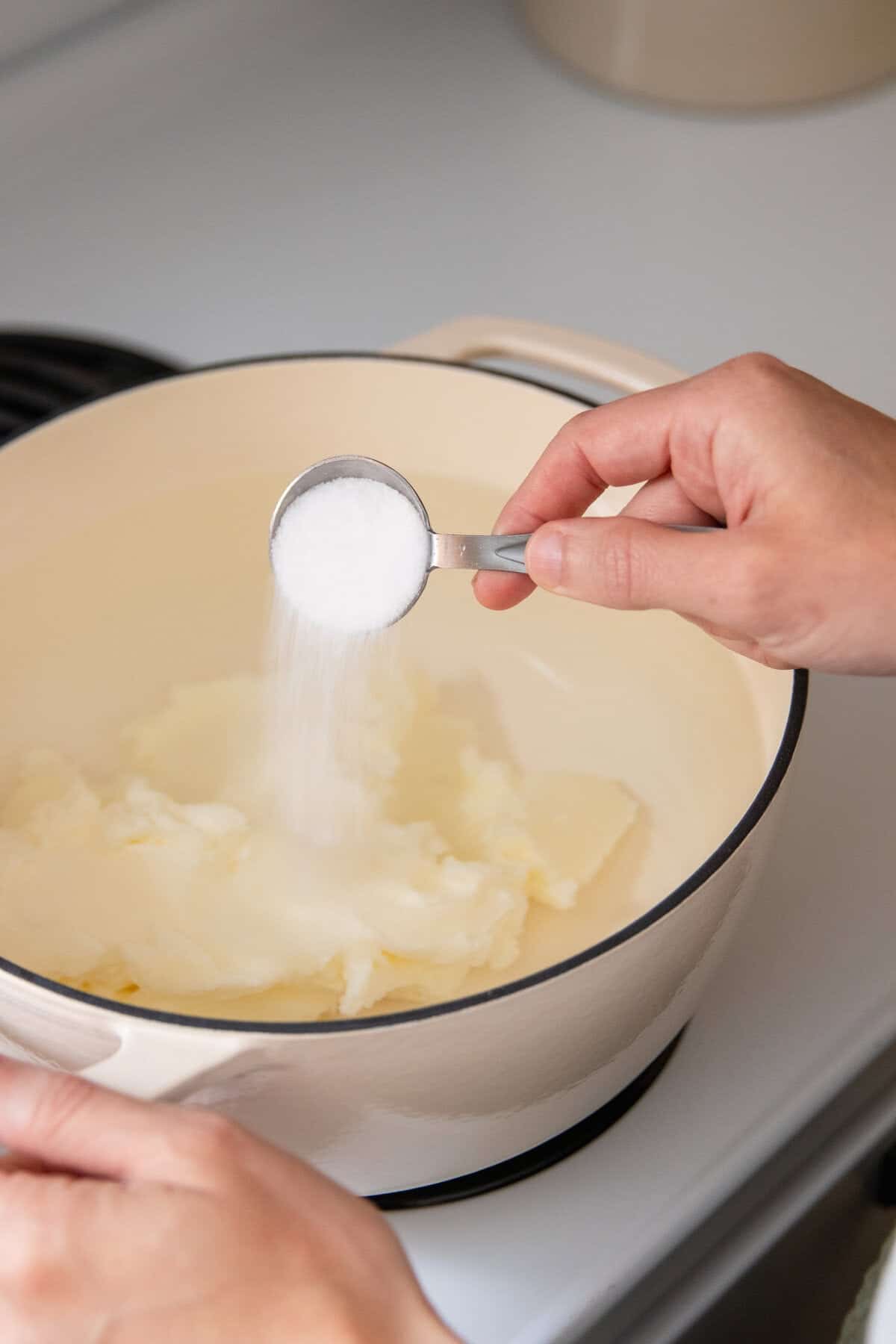

Step 2:Add salt
Then sprinkle 3 tablespoons of salt over top.
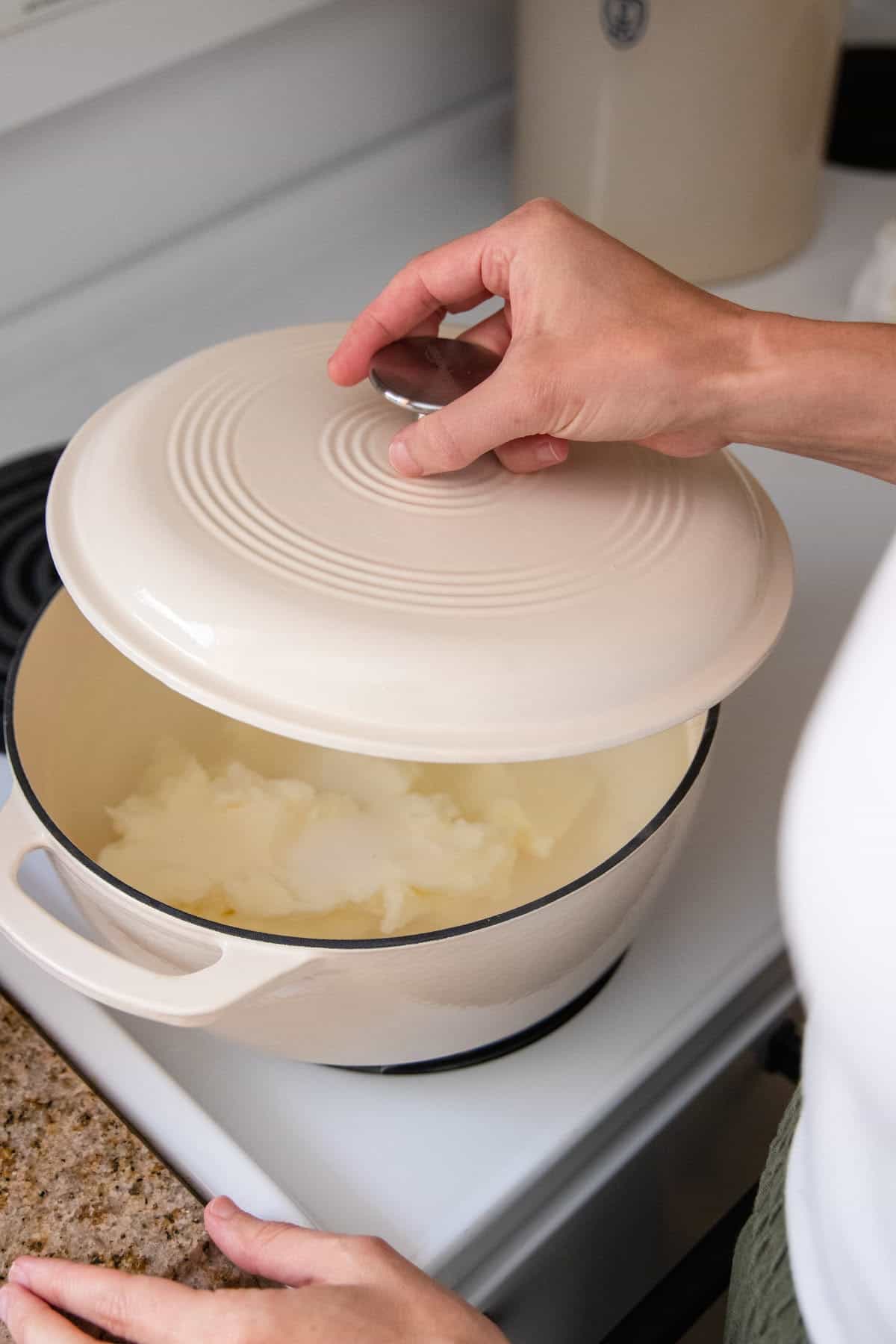

Step 3:Let simmer for an hour
Cover the pot and bring the mixture to a boil over medium-high heat. Once boiling,reduce the heat to low and let it simmer for an hour.
This will help separate any impurities from the fat.
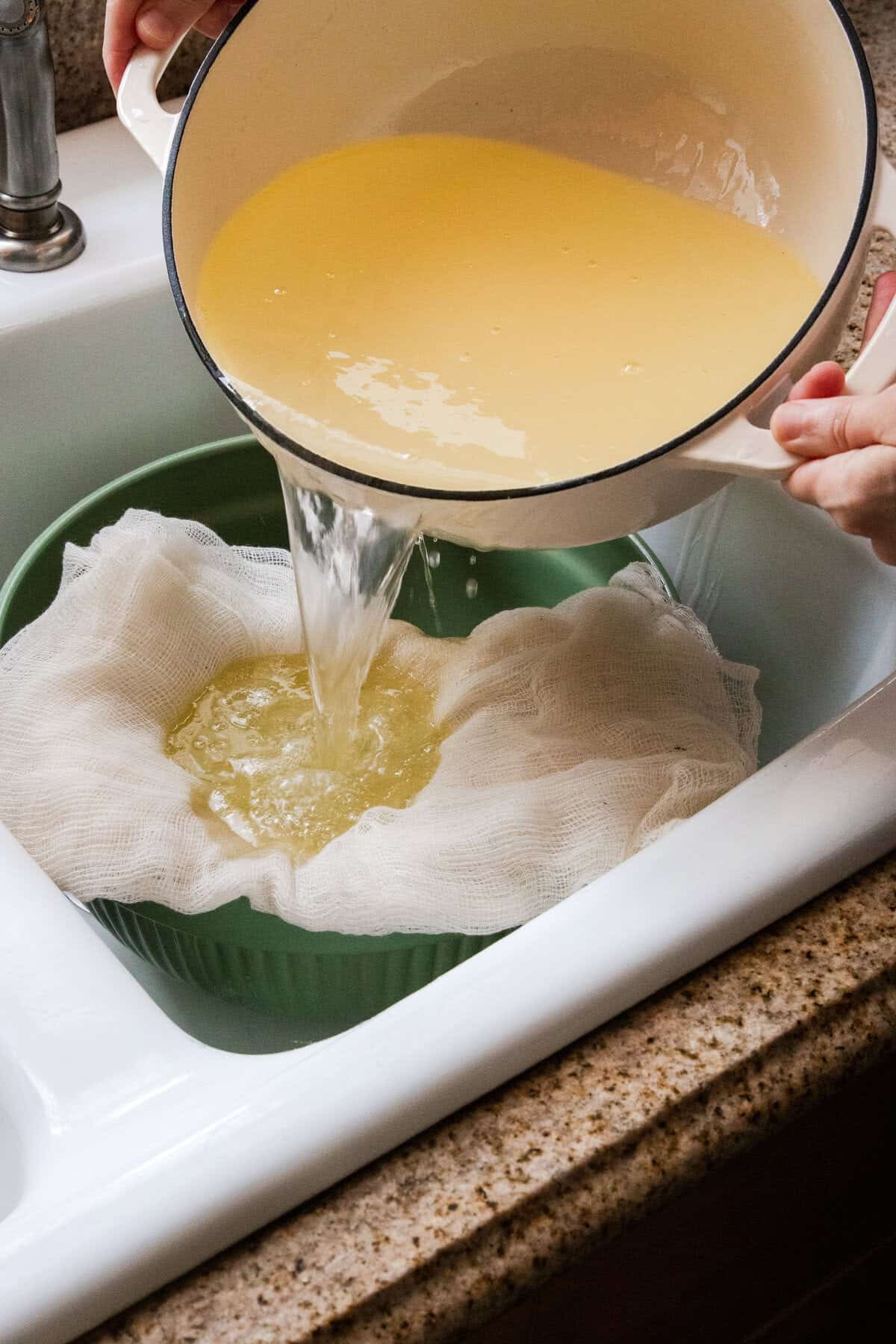

Step 4:Strain the liquid into a bowl
Place a fine mesh sieve over a large bowl and line the sieve with paper towels or several layers of cheesecloth.
Carefully pour the hot liquid into the sieve a little at a time to avoid any spills or messes.
Step 5:Cool the strained liquid in the refrigerator
Place the bowl of liquid in the refrigerator and let cool overnight,or until the tallow becomes firm and can be removed easily.
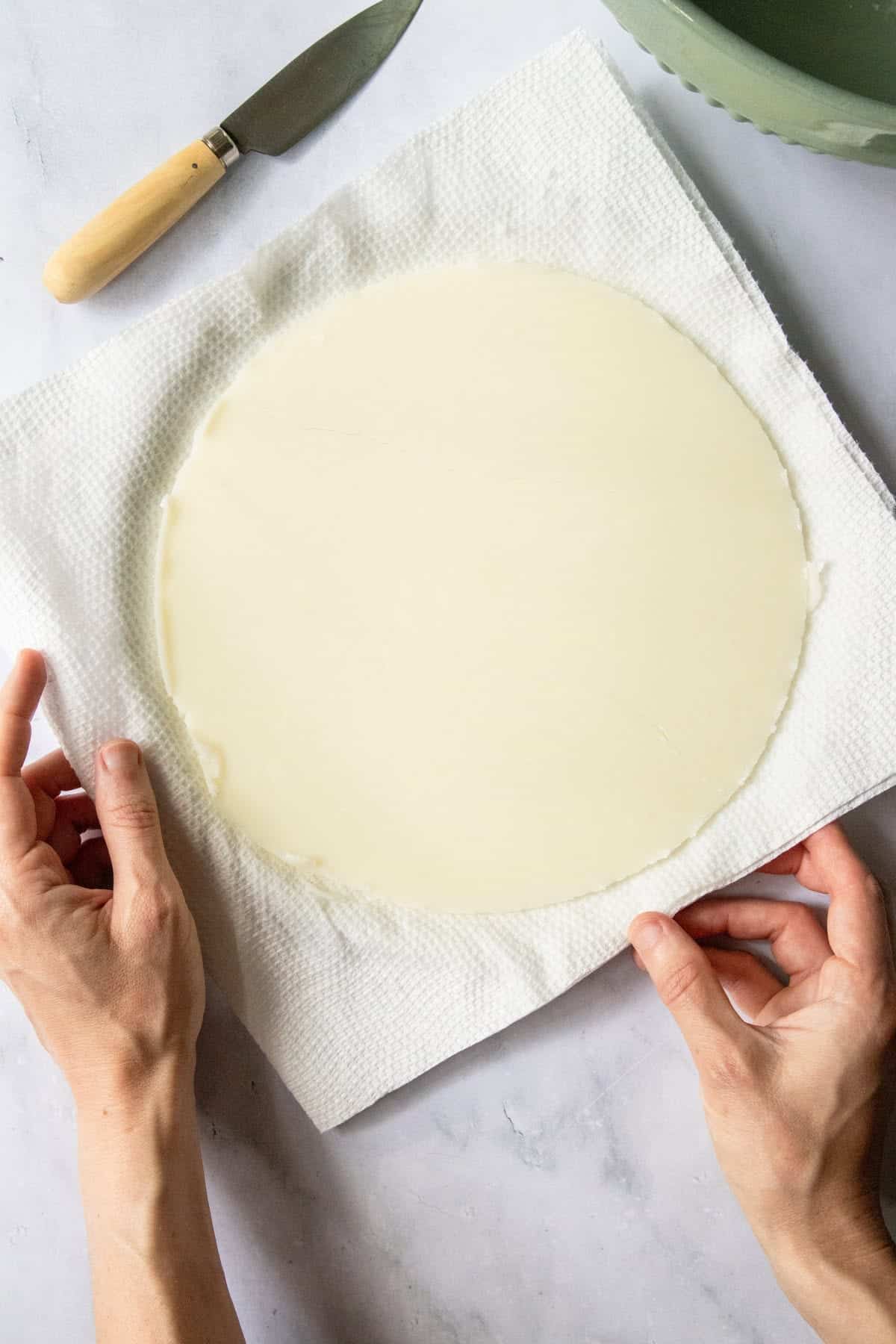

Step 6:Remove hardened tallow
Then remove the block of hardened tallow resting on top of the water. Place it on a plate lined with paper towels and allow it to air dry at room temperature for several hours (I used a small fan to help it dry faster).
Replace the paper towels as needed until they no longer feel damp when you touch them. Any remaining moisture can cause the tallow to mold over time,so take your time with this step.
You can repeat this entire purification process once more if,if needed.
DIY Tallow Balm Instructions
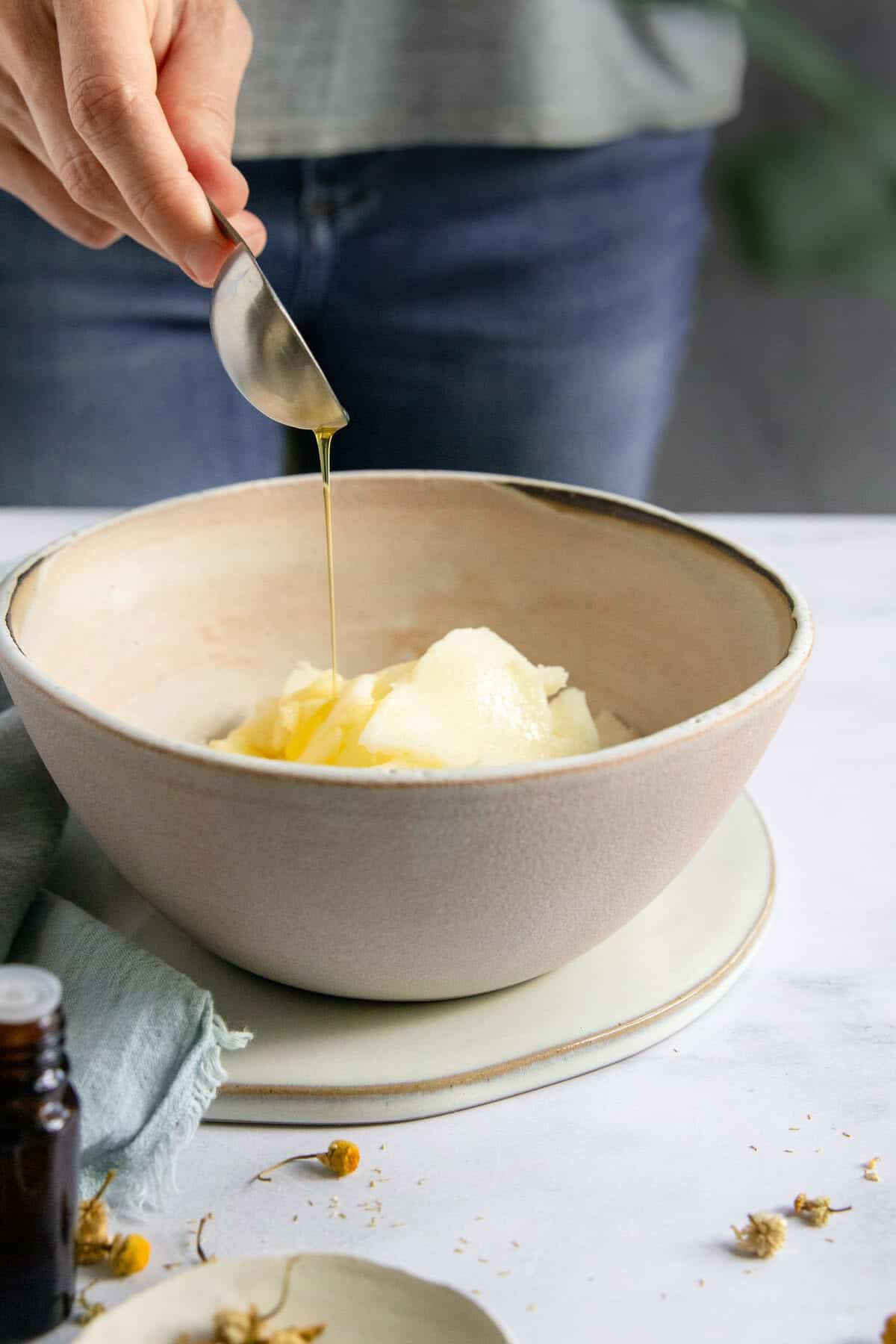

Step 1:Melt tallow and olive oil
Combine the olive oil and tallow in a microwave safe bowl. Then heat in 20-second intervals in the microwave until melted.
Melt tallow slowly to achieve a smooth consistency.If melting tallow on the stove,use a double boiler to keep it from contacting direct heat,which can scorch it.
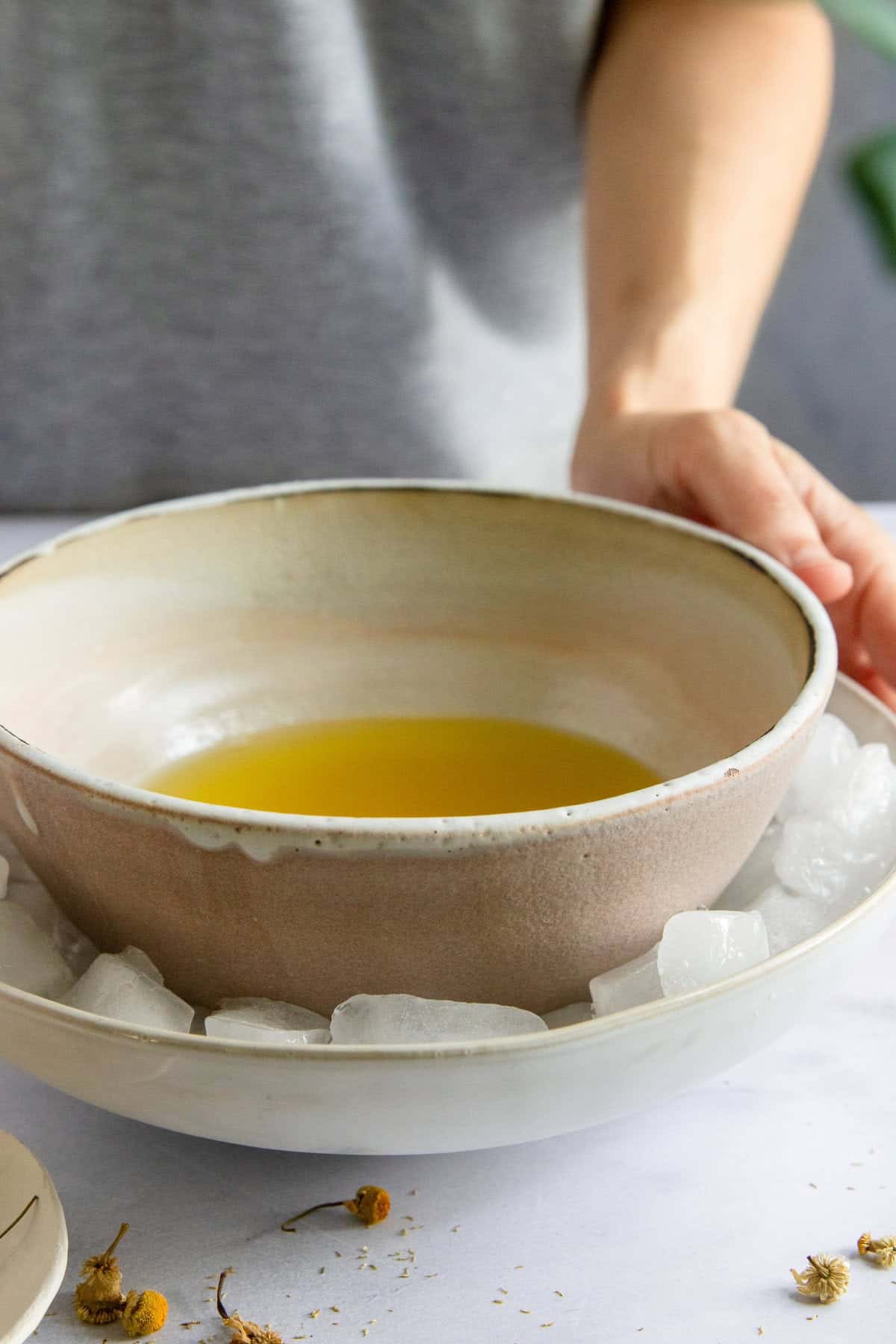

Step 2:Place the melted oils in an ice bath
Fill a large bowl with ice cubes and a little water. Place the bowl of melted oils in the ice bath and let cool for 1-2 minutes.
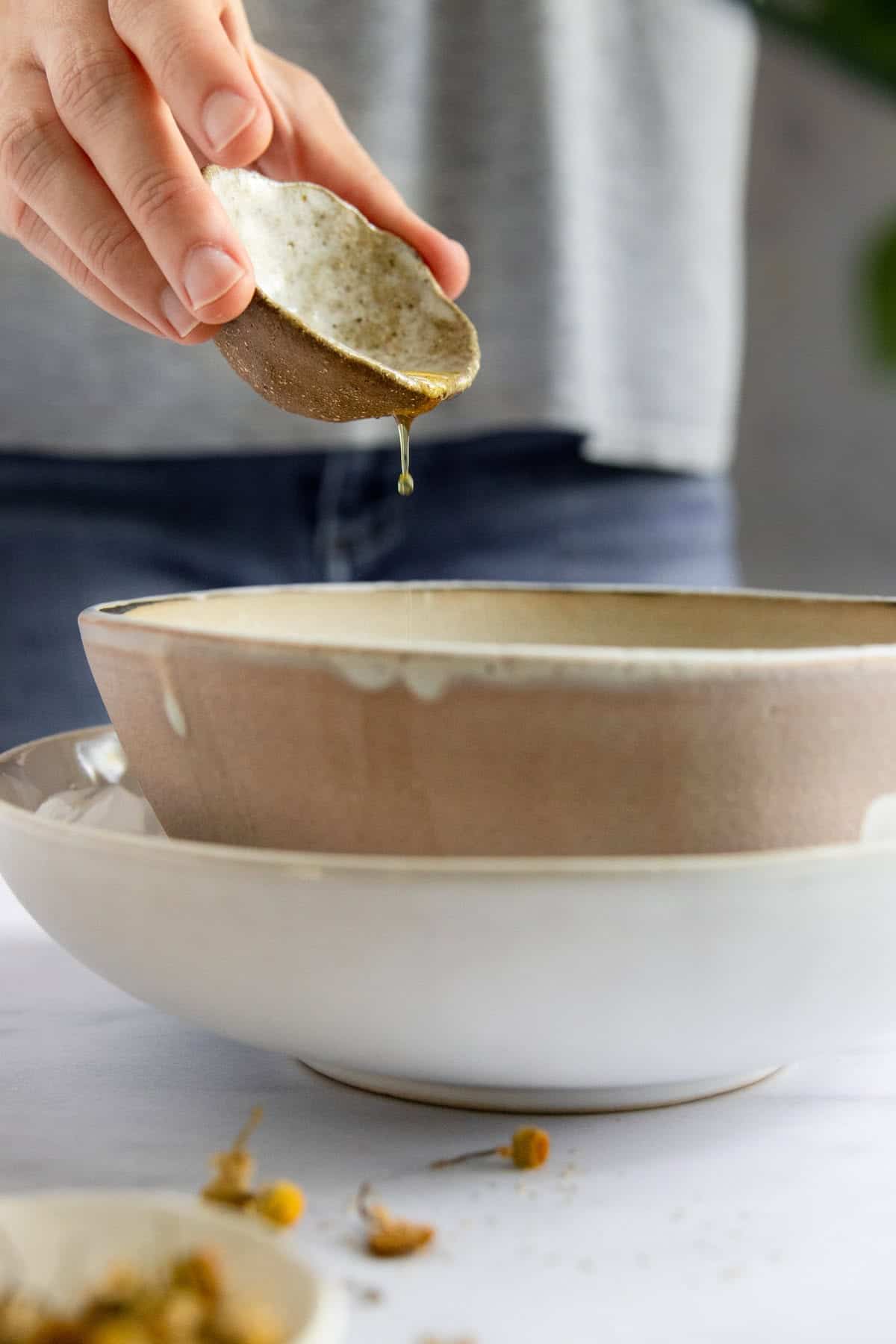

Step 3:Add essential oil
Once the mixture has cooled slightly but is still liquid,add the essential oils. Start with 10-15 drops and adjust to your preferences.
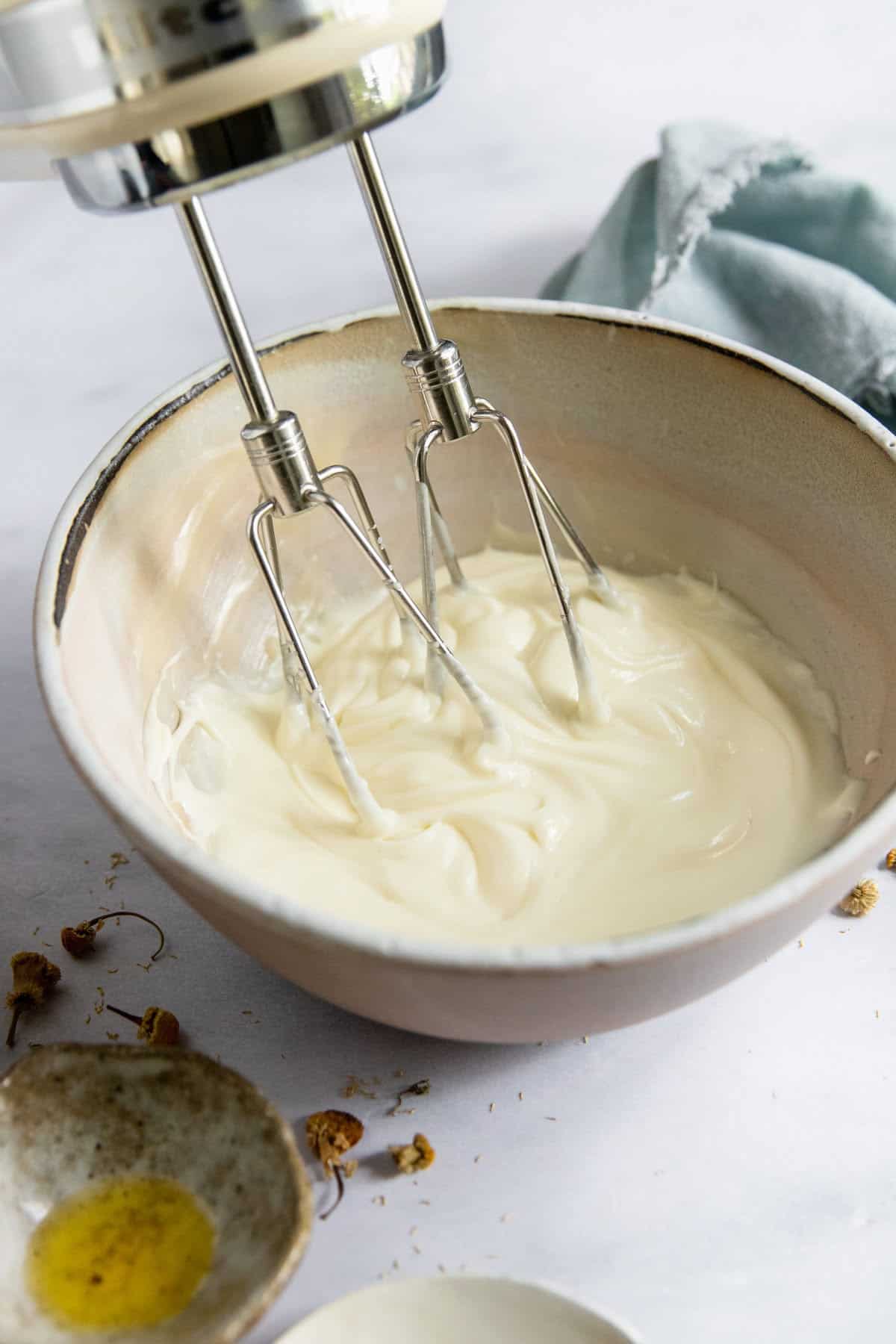

Step 4:Whip the oils until fluffy
While still in the ice bath,use a hand mixer to whip the oils on high speed until the mixture comes together. It should resemble the consistency of thick cake batter.
This may take several minutes,so be patient. Scrape the bowl every so often to incorporate the solidified oils back into the mixture.
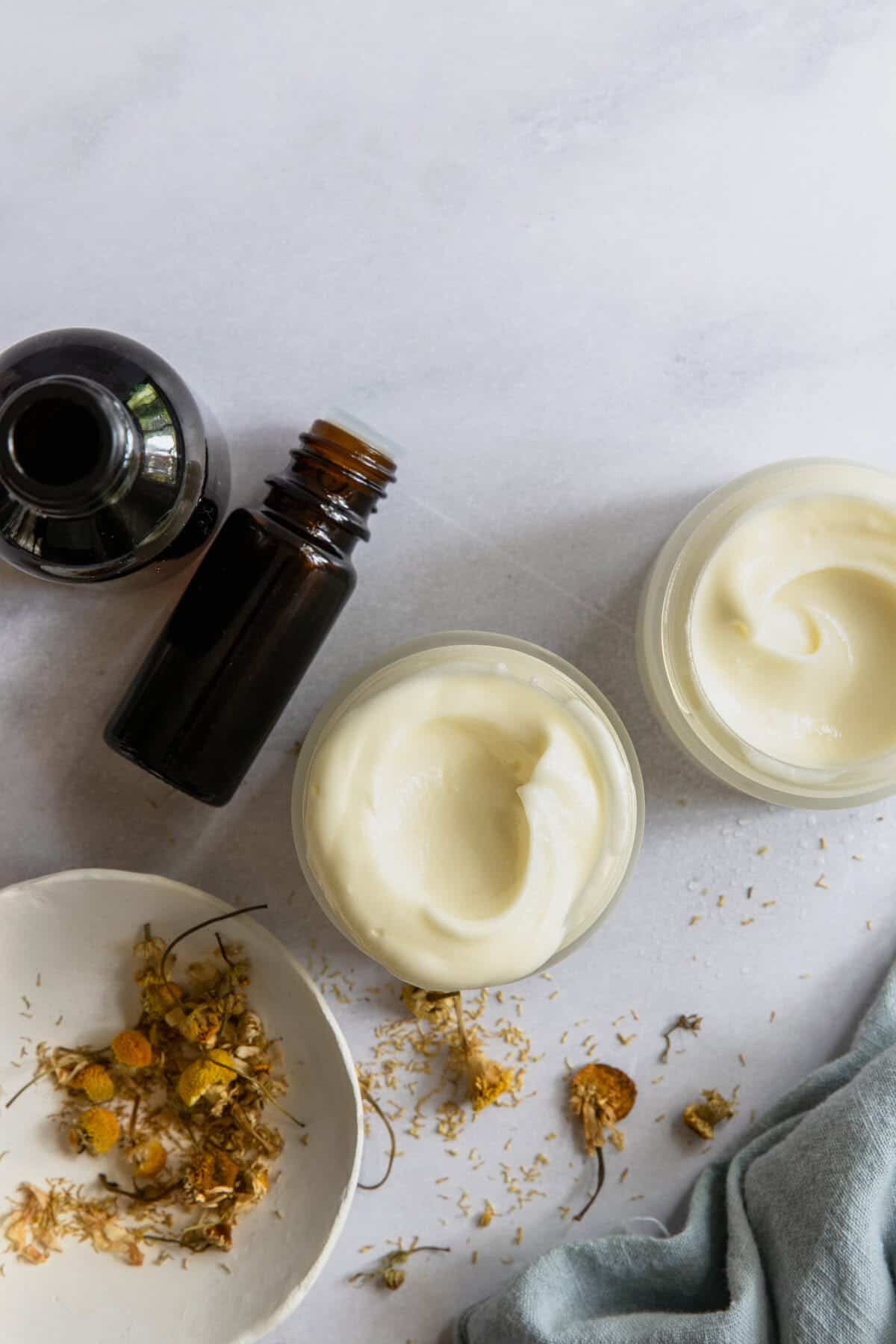

Step 5:Transfer to a clean storage container
Once the balm is whipped to your desired consistency,transfer it to a clean storage container. Glass jars or metal tins work well for this purpose.
Substitutions
Vegan— If you’re vegan,you can just go ahead and skip this one,since there’s not really a plant-based substitute for tallow. Or you can check out this homemade oatmeal lotion,which provides long-lasting hydration without the animal products.
Essential oils— You can also incorporate strong-scented essential oils,like peppermint,eucalyptus,or lavender,in your tallow balm to mask any remaining odor.
Variations
- Using baking soda can cut down on odor.When purifying your tallow,trying adding ½ teaspoon of baking soda to the tallow / water mixture to help reduce the beefy smell.
- If your tallow is too soft,add beeswax.Depending on the tallow you use,you find that your balm softens too easily. In that case,try adding a teaspoon of beeswax to your melted tallow mixture to give it a firmer texture.
- Customize for your skin type.If you have dry skin,replace the olive oil with more emollient oils like avocado or sweet almond oil for extra hydration. If you have oily skin,use lighter oils like grapeseed or jojoba oil,which are less likely to clog pores.
Storage


Always label and date your tallow.Animal fats go bad relatively quickly. So make sure to label your tallow balm with the date it was made.
Choose a clean,airtight container made of glass or food-grade plastic to prevent contamination and preserve the balm’s quality. Store the container in a cool,dark place,such as a pantry or a bathroom cabinet,away from direct sunlight and heat. This will help maintain the balm’s consistency and keep it from melting or separating.
You can store homemade tallow balm at room temperature for up to 4 months. If you live in a particularly warm climate,consider keeping the balm in the refrigerator for up to one year.
FAQ
Tallow balm is safe for most skin types,including sensitive and acne-prone skin. That being said,it’s always best to perform a patch test first to make sure you don’t have a reaction to it.
Yes,absolutely! All-natural,nutrient-rich tallow balm makes an excellent moisturizer for both the face and body.
If your tallow balm has an unpleasant smell,it may have gone rancid. If you’re sure that it hasn’t, purifying your tallow and adding essential oils can also help mask any mild odor.
Beef and lamb tallow are the most commonly used for skincare,but I don’t see why you couldn’t use other kinds of tallow. Make sure the fat is sourced from a reliable,grass-fed animal to maximize the nutrient content and benefits.
Tallow Balm
We’ll show you how to make nourishing tallow balm at home with this easy 3-ingredient recipe.
Yield:10ounces
Cost:$15
Instructions
Place the tallow and olive oil in a microwave-safe bowl (make sure that the bowl is large enough to allow for easy mixing).
Microwave the mixture in 20-second intervals. Stir between each interval to ensure even heating and prevent the fats from overheating. Continue this process until the tallow is completely melted and the mixture is well combined. This should take around 1-2 minutes in total.
Prepare an ice bath by filling a larger bowl with ice and a little water.
Place the bowl with the melted mixture into the ice bath. Stir occasionally to help the mixture cool evenly. This step helps speed up the cooling process and starts to set the balm.
Once the mixture has cooled slightly but is still liquid,it’s time to add the essential oils. Start with a few drops (about 10-15 drops total) and adjust according to your preference. Stir well to evenly distribute the oils.
While still sitting in the ice bath,use a hand mixer to whip the melted oils on high speed until it becomes light and fluffy. This step incorporates air into the balm,giving it a smooth and creamy texture. Be patient,as this process may take several minutes (usually around 5-10 minutes) to achieve the desired consistency.
Once the balm is whipped to your desired consistency,carefully transfer it to clean storage containers. Glass jars or metal tins are ideal as they are airtight and protect the balm from light and air exposure.
Notes
Ensure all utensils and containers are clean and dry to prevent contamination. Store the balm in a cool,dark place . If you live in a warm climate,consider refrigerating it to maintain its consistency and prolong its shelf life.
0
